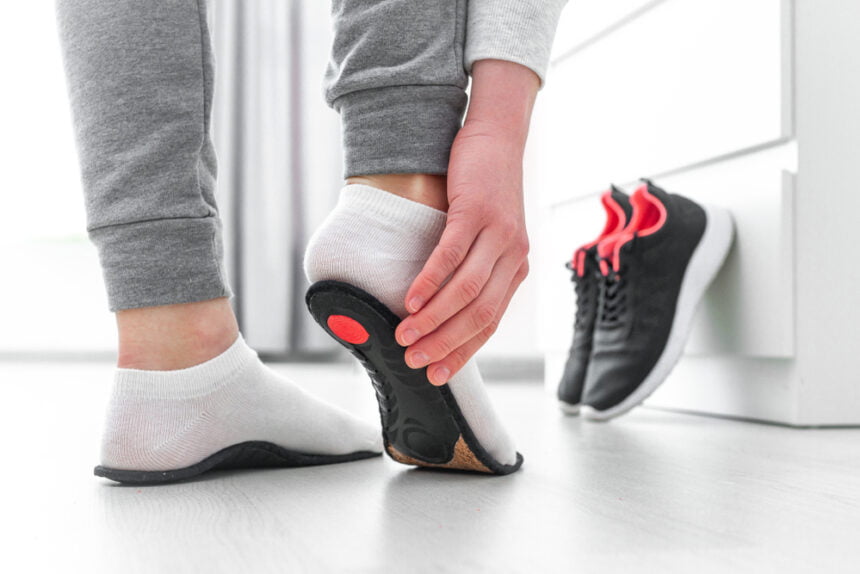Flip flops, ballet flats, and slip-on sandals are always in fashion. They are easy to find, easy to put on, and usually pretty cheap to replace. But, is there a health risk associated with wearing them?
Despite the popularity of flat shoes, there have been plenty of reports that have shed light onto the danger that flat shoes are to your feet. Since so many people wear them, in this article we are going to go over why flat shoes, whether they are flats for wide feet or narrow feet, might be risky to wear. Here are some conditions to watch out for with flat shoes and how to prevent them.
Plantar Fasciitis
The first condition that can be caused by flat shoes is plantar fasciitis. This is a common foot condition where the inflammation of the fascia that runs along your foot causes you pain. The fascia will tighten as you sleep, making mornings much worse when you suffer from this condition. The tell-tale sign of this condition is heel pain.
If you are suffering from plantar fasciitis, it will be aggravated by unsupportive shoes, like flip flops and other flat shoes. You can help avoid future problems by looking for flats that had a lot of arch support. Steer clear of flats that have really thin soles.
Misalignment
Another condition that can be caused by flat shoes is a misalignment of your knees, hips, pelvis, and spine. Your joints will sink one way or another, trying to compensate for the unsteadiness of wearing the flat shoes. This health problem can be long-term and might not go away on its own.
To avoid this problem, you really need to stay away from really flat shoes, like flip flops. Stick with sandals that have a lot of support in them. Even ballet flats and loafers can come with high arch supports to help keep your joints where they are supposed to be. Just look for a quality pair. Here is a list of shoes for wide feet women that you can consult.
Ingrown Toenails
Ingrown toenails are incredibly painful and can be caused by some flat shoes. They are unlikely to be caused by open-toed sandals or flip flops, since the toes are out in the open, but more likely to be caused by ballet flats. These types of narrow shoes are often too tight around the toe, simply by design. When a shoe squeezes your toes, your toenails run the risk of growing inward, instead of outward. When that happens, you will develop an ingrown toenail. Unfortunately, these toenails cause an infection relatively simply, which can lead to even further issues with your health as well as your feet.
To avoid ingrown toenails, make sure that your flats are giving your feet plenty of room to move around. You should be able to wiggle your toes without causing yourself pain. Ingrown toenails are not limited to flat shoes, but they do happen more often, simply because the design of closed-toe flats is meant to squeeze the feet to give off a more dainty appearance.
Blisters
Blisters are another result of uncomfortable shoes that are not limited to flats. With flat shoes, blisters often happen because there is no shock absorption in the shoe. They are meant to be light and thin, so as your foot hits the ground repeatedly, your heels take on the impact, leading to a lot of problems, including blisters. Blisters can appear on any part of your foot, from the heel to the toe, and even the top of your foot.
To avoid blisters with flats, look for shoes that have a low-heel rather than being totally flat. Even having a bigger sole of the shoe can help prevent the impact that causes uncomfortable blisters to form. Do not keep wearing shoes once they have given you blisters. You must allow the blister to heal.
Remember that while flat shoes might put you at a greater risk of developing health conditions, through careful shopping, you can find a pair that will not cause you pain. There are some people who cannot wear flats, because they need more support than they offer, so if you are still in pain, it is best to consult with a physician.

